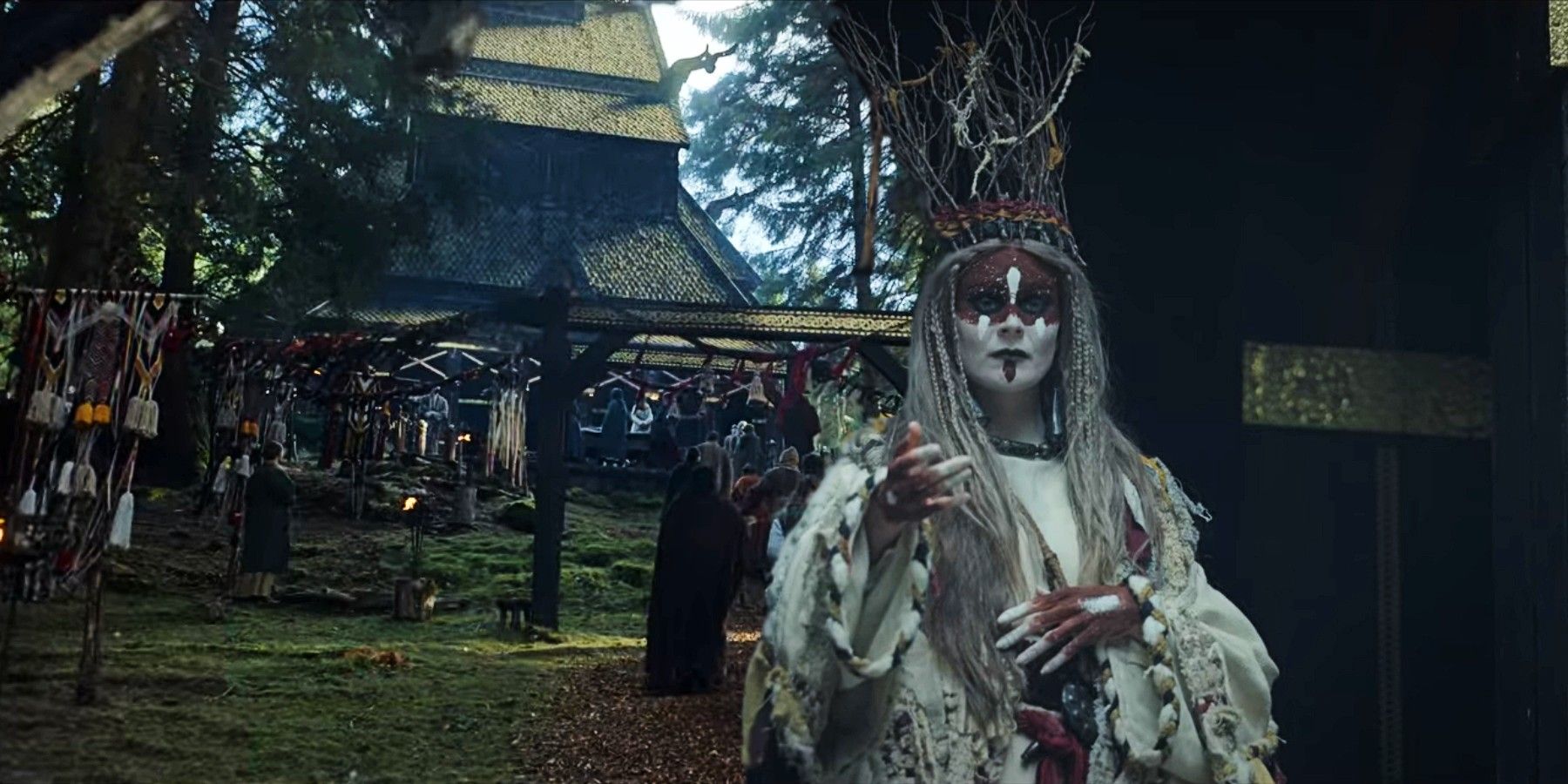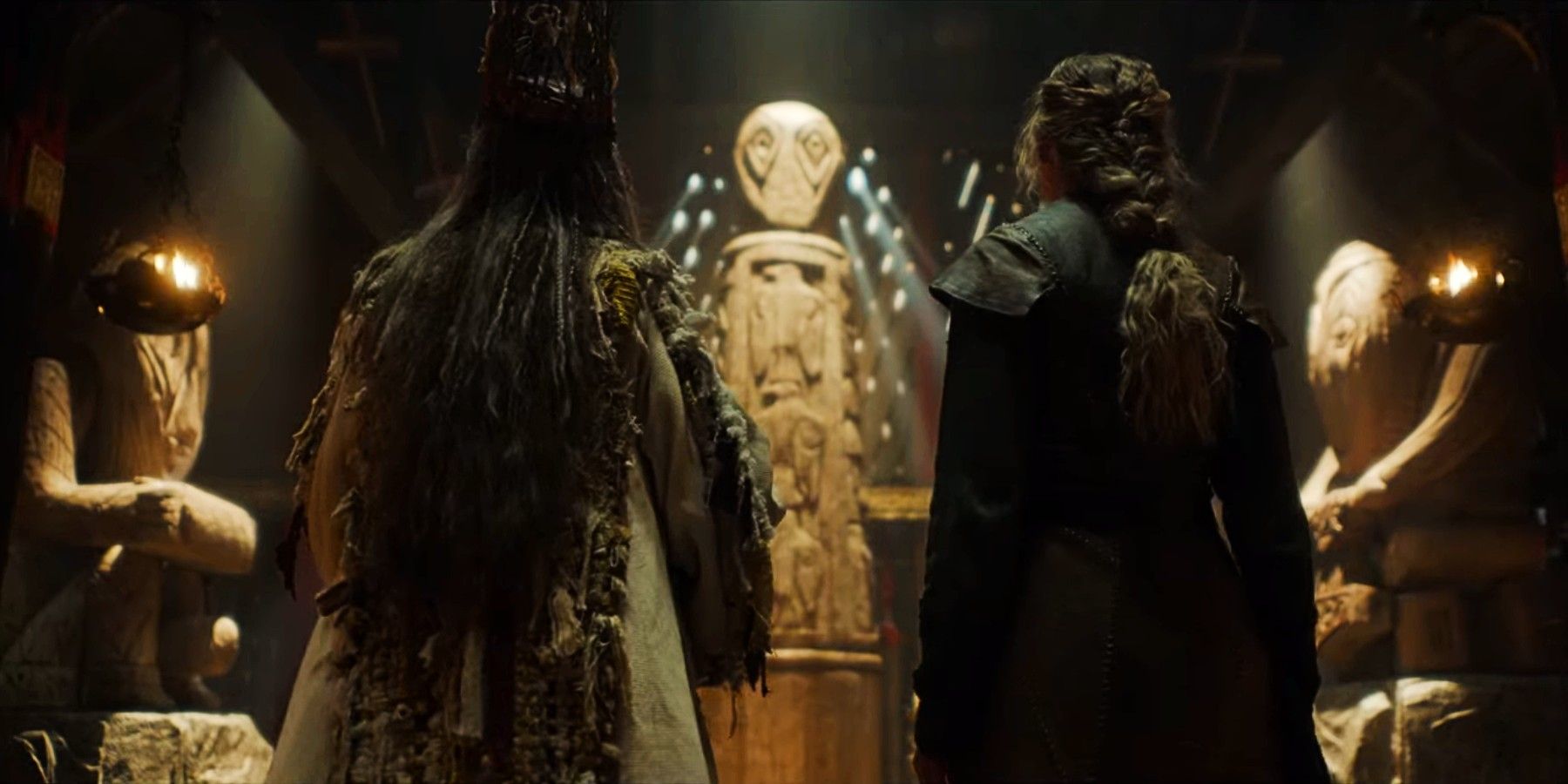Warning: Contains SPOILERS for Vikings: Valhalla
The Uppsala pagan temple in Vikings: Valhalla had an important part in Freydis’ story, and it also appeared in History’s Vikings – but it's not immediately clear whether it exists in the real world. Vikings’ sequel Valhalla was released on February 25 on Netflix, and it focused on fictionalized versions of Norse sagas protagonists and historical figures Leif Erikson, his sister Freydís Eiríksdóttir, and Norway king Harald Hardrada Sigurdsson. Unlike reality, Valhalla placed Leif Eriksson (Sam Corlett), Freydis Eriksdotter (Frida Gustavsson), and Harald Sigurdsson (Leo Suter) in the same period at the end of the Viking Age between 1002 and 1066, and together in the fictional Norway town of Kattegat, home of Ragnar Lothbrok (Travis Fimmel).
While Leif and Harald traveled to England with other fighters to avenge Saint Brice's Day’s massacre by the English, the Uppsala temple played an essential part in Freydis’ story. Despite still being a devout follower of the Norse religion, contrary to many other Vikings who converted to Christianity, Freydis never visited the temple in Uppsala, as she lived her whole life in Greenland until she got to Kattegat. History’s Vikings introduced the temple in season 1 episode 8, when Ragnar, Lagertha (Katheryn Winnick), Athelstan (George Blagden), and many others visited it for their usual pilgrimage every nine years.
The Uppsala temple, as seen on Valhalla and Vikings, is largely based on the work of 11th-century historian Adam of Bremen. His historical dissertation “Gesta Hammaburgensis Ecclesiae Pontificum” detailed the pagan temple and its rites from a Christian point of view, but the actual temple was also mentioned in Saxo Grammaticus’ work and by Icelandic mythographer Snorri Sturluson. Adam of Bremen’s account of the temple placed it in the old part of present-day Uppsala, located 71 kilometers north of Stockholm, Sweden. As a result, while aspects of the Uppsala temple in Vikings: Valhalla may be fictitious, it also has its roots in reality.
While Adam of Bremen’s account of the temple is the most detailed one, it’s also considered partial, as the historian did not attempt to provide an objective angle, instead choosing to write with the objective of showing how inferior the old faith was compared to Christianity. This is particularly emphasized by how he talked about the temple rites, saying that the sacrifice was “of this nature” before calling the believers “heathens.” Differently from Valhalla, where Freydis met the seer through her visit to the temple, Adam of Bremen’s dissertation didn’t mention other practices performed there that weren’t blood sacrifices. He did, however, talk about the statues of Thor, Odin, and Freyr, with the latter becoming a statue of Freya in Valhalla.
Adam of Bremen’s account of the Uppsala temple isn’t wholly believed by scholars, as it’s thought to be a description the historian embellished using details a Christian recounted to him, making it in a way second-hand fictionalized knowledge. Still, the Uppsala temple undoubtedly existed, and it was on grounds considered sacred, as proven by the many burial sites found around it. Its relevance was also recognized by Christians since Swedish Christian King Inge destroyed it around 1080 in order to wipe out those that he called “wizards and witches” of the old faith. Vikings: Valhalla might have changed history, having Jarl Kåre (Asbjørn Krogh Nissen) destroy the Uppsala temple, but it still managed to depict the Uppsala temple with the dignity and care Adam of Bremen deprived it of.


